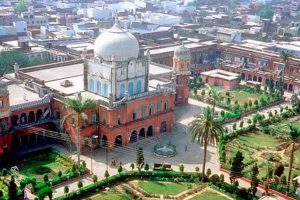British colonization of India began with the rise of the East India Company. After the establishment of the company in Calcutta (1757), the British government completely took control of India until 1857 under the cover of the activities of this company. By the passage of time, it expanded its colonial rule throughout India.
After the British occupation of India, the Muslims of this land suffered more than others. The policy of the colonialists was to remove Muslims from governing posts. Establishment of the British government in India affected the different classes of the Muslim community in different ways, not only it destroyed income of the Muslims but also it disrupted their way of life. For the Muslims, British domination of India meant the loss of everything, because even though they made up one-fifth of India’s population and ruled India for centuries and had tremendous cultural influence, the British government had always considered them their number one enemy and believed any kind of resistance, insurgency and sabotage on their part.
The revolution and widespread uprising of the Indian people against the hegemony and colonialism of the British government in 1857 is a historic turning point in the contemporary history of the subcontinent and one of the most famous popular uprisings of the nineteenth century. This revolution, which was initially accompanied by achievements and victories, was soon met with severe and bloody revenge by the British and failed. With the defeat of the revolution and the fall of Delhi and the complete domination of India by the British colonialists, a new phase in the history of the subcontinent began, especially for the Muslims of this land who had previously ruled in India.
In such circumstances, the students and trainees of Imam Shāh Waliūllah Dehlavi’s intellectual and reformist school traveled to different cities and regions to protect Islam and the religious, cultural and social identity of Indian Muslims. They began efforts and movements with careful and long-term planning.
After several years of efforts and group planning of the scholars and elders of this school of thought under the leadership of Mawlana Mohammad Qāsim Siddiqi Nānautvi, on May 30, 1866, Darululoom Deoband, a scientific and educational center was founded in the northeast of Delhi. So, in practice, the method of combating the colonialism entered from the military phase and the armed uprising into the cultural phase and civil struggle. Mawlana Mohammad Qāsim Nānautvi and his co-thinkers successfully developed a mindset that was against the colonial rule; it left no stone unturned to protect the identity of Indian Muslims and to grant freedom and independence to all Muslims and non-Muslims alike.
The first student and graduate of Darululoom Deoband is Mawlana Mahmoud Hassan Ūsmāni Deobandi (1851-1920) who has continued and developed the way of his teachers and mentors in the scientific and practical fields well. He is the founder and inspirer of many struggles and movements inside and outside India. Not only he was the leader of the caravan of science, knowledge, invitation, and determination, but he also became a symbol of freedom, libertarianism, and anti-colonialism in the field of jihad and political and civil struggle. The people of India nicknamed him “Shaikh-ūl-Hind/the Leader of India” for his services and struggles.
Now, a century has passed since the death of Mawlana Mahmoud Hassan, and the passage of time has made his name and memory more prosperous and his thoughts have been the beacon and inspiration of many struggles and movements. In recent decades, some scientific centers, think tanks, scholars and intellectuals inside and outside of the Indian subcontinent have explored more different angles of the thoughts and services of the Leader of India and have benefited from his lofty thoughts, discretion and wisdom.










Comments